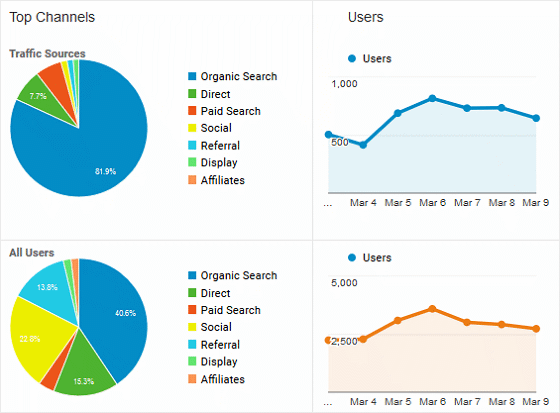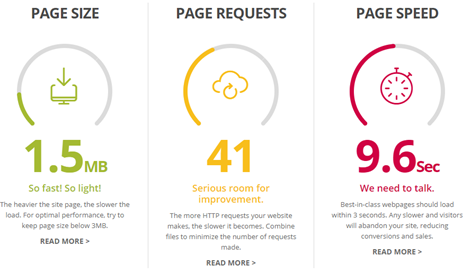7 Major Publisher Issues in 2020
Working with dozen’s of the world’s best publishers, we talk with our partners everyday on the overall challenges facing both their business and the overall 2020 media landscape. Here’s our take of 7 major issues that publishers face.
(Big shoutout to Digiday journalists for putting together some of the best pieces in the industry, disseminating and breaking down complex publisher issues)
1. Giving up more page real estate for less revenue
A major issue facing publishers? Feeling forced to continuously give up more and more page real estate to fit ads, sometimes with even lower revenue than before.
With huge infinite scroll ad units, publishers face the rock-and-a-hard-place situation of adding more ad units to their content pages in an effort to increase revenue. Unfortunately, all this does is drive down key audience engagement metrics like time on site, bounce rates, page views per session, and more.
2. Inflexible ad tech partners
With publishers turning to different forms of ad tech revenue, there’s a need for flexibility among all parties. When ad partners have rigid testing limitations, no flexibility, and attempt to limit other ad revenue on the page, it limits a publisher’s ability to generate increased revenue, and sneaky auto-renew clauses in long-term contracts lock publishers into unfavorable rates for years.
3. Lack of traffic source diversification
Over the last few years, publisher reliance on social has decreased as many got severely burned with algorithmic changes all throughout 2018. Many began the long shift away from social media as a main driver of traffic and so the search began for other traffic sources.
Our partners at Liftable Media, COO Ford Jordan, said, “Western Journal was hit hard by the impact of major platforms shifting traffic away from publishers, but this has only increased our efforts to brand and drive traffic to our site organically. Our efforts have been rewarded by finding a much more loyal and dedicated reader base that we’ve continued to grow. Although it can be really difficult to find other valuable sources of traffic, the changes have made us a better company overall.”⠀” ⠀⠀⠀⠀⠀⠀⠀⠀⠀
Luckily, many publishers have been successful in this pivot, slowly but surely working to diversify traffic sources. With this traffic diversification came added bonuses as well – creativity when it comes to reader revenue, exploring in-house technology, and a resurgence of resources dedicated to improving owned and operated platforms.
From Digiday Research, “The general consensus is that readers who visit publishers’ owned and operated platforms are likely to convert at a higher and faster rate than third-party platforms, like Facebook and Google, which have been steadily dwindling in support and importance for publishers,”

4. No revenue diversification
Just like relying on social traffic burned publishers at one point, relying on one stream of income puts publishers at massive risk. AdExchanger reported media publishers are looking at a minimum of 4 to 5 revenue streams to create some stability.
In an article from Digiday’s Gianna Capadona, a product director at a digital-native publisher said, “Creating yield solutions to effectively optimize across all of our revenue streams. We’re considering tech solutions going forward, but as of yet, we do not have a fully comprehensive yield optimization solution across these revenue types.”
5. Slow ad tech that negatively impacting organic traffic and SEO
As organic traffic and SEO gets a popularity bump, publishers are reminded of the Marketing 101 items that make Google search rankings happy. Page load speed is one of the top factors in determining page ranking, and the difference boils down to milliseconds.
Having multiple ad tech partners can make a publisher’s page sluggish and lethargic, costing them revenue and higher organic page rankings. If ad tech partners are handing over heavy scripts, slow-loading html, and more, they’re going to compound and drag a page speed down even more.
Steve Flee, Chief Technology Officer, at RevContent, said, “100 milliseconds of load time can cost a publisher ~20% in revenue over the course of a year.”
At RevContent, our tech team iterated on our old script, creating an asynchronous page script, that loads 3X faster than competitors called Performante. For one of our publishers, heavy.com, it took their page load speed from 380 milliseconds down to 240 milliseconds, giving them a 97% on Google PageSpeed Insights.

6. New privacy policies that bring revenue uncertainty
With CCPA, Google Chrome tossing cookies in the trash, GDPR, and more legislation centered on consumer-privacy, publishers face uncertainty on how exactly these changes will affect programmatic revenue in 2020.
Trey Brenner, VP of Strategic Partnerships at RevContent said, “Many publishers experienced a hit to digital ad revenue when GDPR rolled out in Europe and fear similar practices in the US may cause yet another dip in revenue around their core audience. There is some uncertainty in the space around the impact of CCPA, which is unsettling.”
As for some advice on how publishers can tackle this uncertainty?
Brenner says, “First and foremost, they want to make sure their ad partners are CCPA compliant to remove any risk of fines or penalties, which can be downright scary. Second, publishers can also invest more into their own first-party data as it becomes exponentially more valuable.”
7. Mobile redirects
Wired says, “Ads that automatically redirect you from your daily browsing to a flashy sweepstakes have long been an incredibly annoying facet of the internet.”
Publishers can be completely unaware of mobile redirects for months or even years as Kelly Martin, Director of Ad Operations at Times Publishing Company details below…
“Malicious ads and mobile redirects have been a problem in the programmatic ecosystem for a long time. As ads stacks and tech evolved, so did the bad actors.
At Tampabay.com, we had tried a few different approaches and vendors prior to testing Clean, a partner of RevContent. Ultimately, the redirects became so bad, specifically via social channels, that we were on the verge of pausing our entire programmatic ad stack on mobile.
The revenue implications of this would have been massive, so we had to find another option. Like an publisher, we hear pitches and receive outreach from vendors ALL of the time, that we become a bit numb and skeptical.
Fortunately, we had a trusted partnership with RevContent, and they were able to not only build our confidence in Clean’s product but also connected us with the CEO and offered us a free test. In full transparency, we had chatted to Clean a few months prior, but we were tentative as their tech was new and a higher dollar amount than the vendor we were using.
Here we are almost two years later, and I am grateful to RevContent for helping us establish trust in this awesome tech and building our partnership with Clean. Instead of spending my time attempting to recreate the impossible to track down redirects, haphazardly pausing partners while losing revenue, and fending off user complaints, I can focus on monetization, ops efficiencies, and the latest greatest things like CCPA and the next Chrome update.”
What do you think are some of the biggest issues facing media brands in 2020?
Through content discovery, RevContent enables publishers and advertisers to engage and grow audiences, develop loyal customers and drive revenue. Sign up or login to your account.


